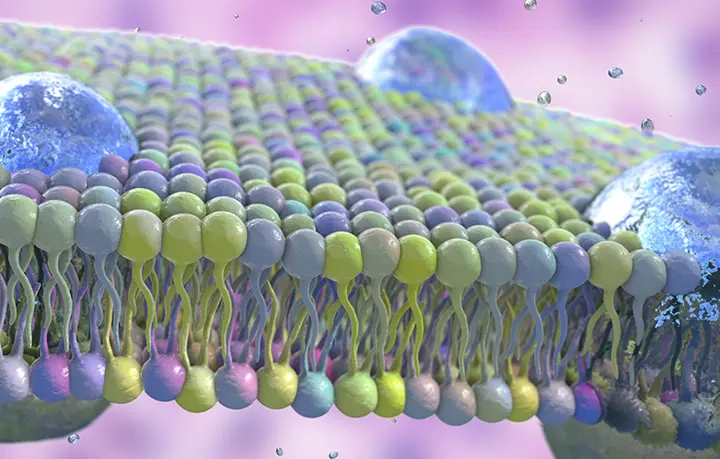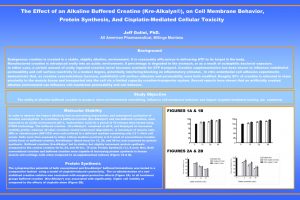The Effect of an Alkaline Buffered Creatine (Kre-Alkalyn®), on Cell Membrane Behavior, Protein Synthesis, And Cisplatin-Mediated Cellular Toxicity
Jeff Golini, PhD.
All American Pharmaceutical, Billings Montana
Background
Endogenous creatine is created in a stable, slightly alkaline, environment. It is reasonably efficacious in delivering ATP to its target in the body. Manufactured creatine is introduced orally into an acidic environment. A percentage is degraded in the stomach, or as a result of acidophilic bacterial exposure. In either case, a certain amount of orally ingested creatine never becomes available for ATP transport. Creatine supplementation has been shown to influence endothelial permeability and cell surface reactivity to a modest degree, potentially interfering/blocking an inflammatory stimulus. In vitro endothelial cell adhesion experiments demonstrate that, as creatine concentrations increase, endothelial cell surface adhesion and permeability were both modified. Roughly 95% of creatine is released in close proximity to the muscle tissue and transported into the cell via a limited capacity creatine-transporter system. Recent reports have shown that an artificially created alkaline environment can influence cell membrane permeability and cell behavior.
Study Objective
The ability of alkaline buffered creatine to produce micro-environmental remodeling, influence cell membrane behavior and impact cisplatin-mediated toxicity, are examined.
Molecular Stability
In order to observe the impact alkalinity had on preventing degradation, and subsequent cyclization of creatine monohydrate to creatinine, a buffered creatine (Kre-Alkalyn®) and non-buffered creatines, were exposed to an acidic environment (pH 3, hydrochloric acid) for a period of 15 minutes then tested using FTNIR technology. The buffered creatine – Kre-Alkalyn® remained at pH 9, and displayed an increased stability profile, whereas all other creatines tested underwent degradation. A monolayer of muscle cells (RD) or chondrocytes (SW1353) were sub-cultured in a deficient medium containing only 2.5 % fetal calf serum. Cells were then exposed to either culture medium (controls) or 0.5 mmol of conventional creatine (white bars) or buffered creatine, Kre-Alkalyn® (black bars) for 12, 24, and 48 hrs and examined for protein synthesis. Buffered creatine, Kre-Alkalyn® led to similar, but slightly increased, protein synthesis compared to the control creatine for 12, 24, and 48 hrs. (Y-axis: Protein Synthesis (%), X-axis: Hrs). Both conventional creatine and buffered creatine were capable of increasing protein synthesis in human
muscle and cartilage cells when compared to unsupplemented cultures (Figure 1A & B). (Detailed numbers can be seen by clicking the Research Poster Presentation image below)
Protein Synthesis
The cytoprotective potential of both conventional and Kre-Alkalyn® buffered formulations was tested in a comparative fashion using a model of cisplatin-induced cytotoxicity. The co-administration of a nonstabilized creatine solution was consistent with marginal protective effects (Figure 2A). In all treatment groups buffered creatine (Kre-Alkalyn®) was associated with significantly higher cell viability as compared to the effects of cisplatin alone (Figure 2B). (Detailed numbers can be seen by clicking the Poster Presentation image below)
Research Poster Presentation Image:

